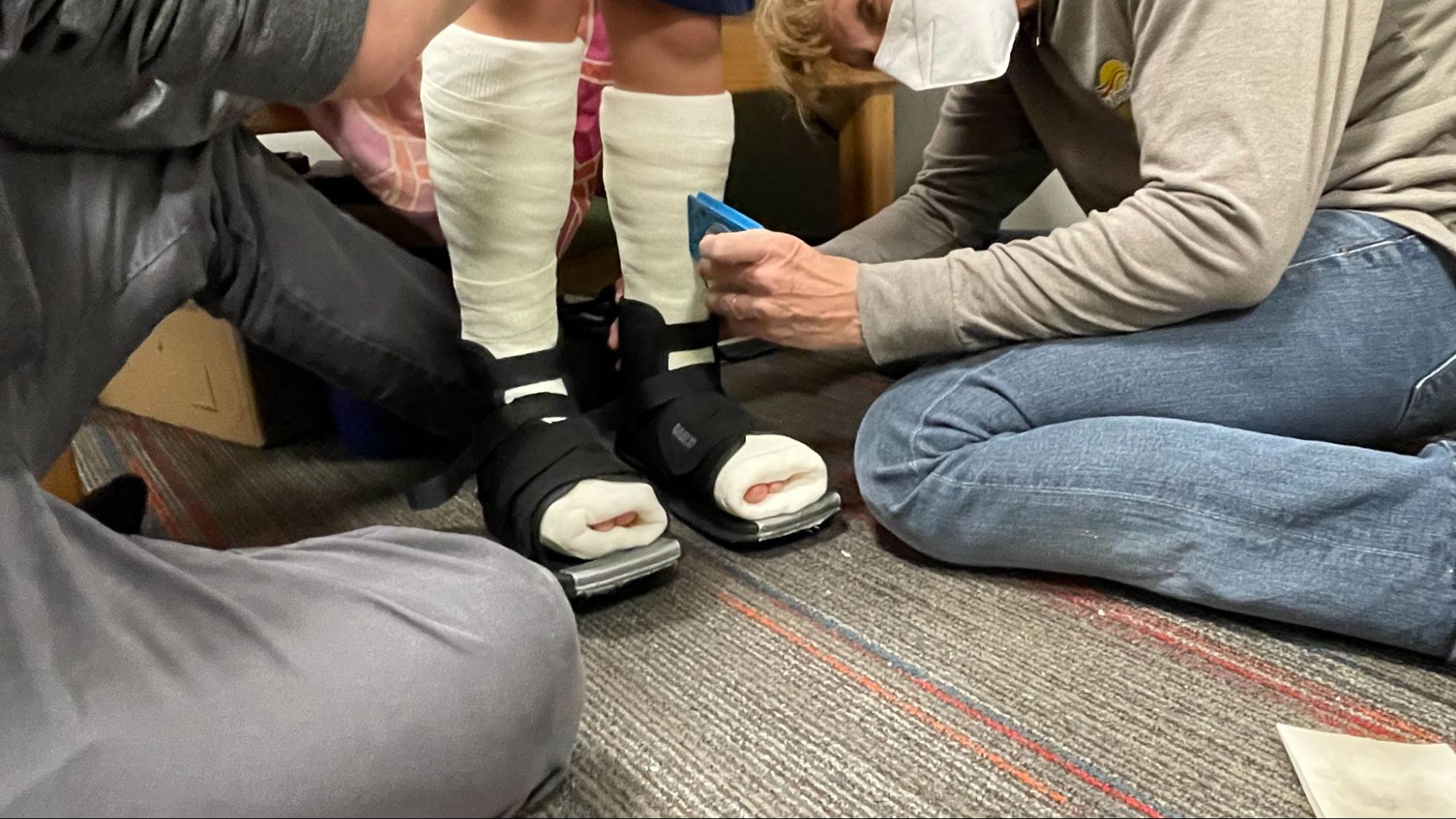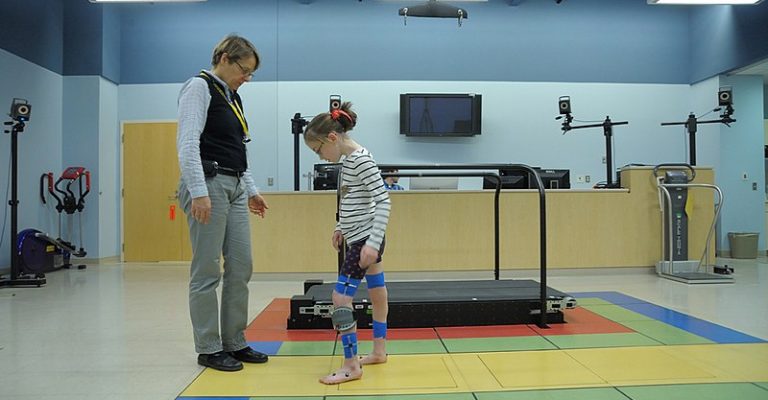Have you heard about serial casting in cerebral palsy? Serial casting is a simple, non-surgical way to treat muscle stiffness. This is found more in people with cerebral palsy. It is all about gentle stretching of tight muscles over a period. This process avoids tightening muscles, which mostly causes discomfort and eventually limits movements.
So it can relieve pain and increase the ability to move freely. This simple yet highly effective technique speaks volumes about what non-invasive techniques can really do for the quality of life and mobility of a person suffering from cerebral palsy.
What Is Serial Casting in Cerebral Palsy?
Serial casting is an assisting strategy that is often applied in children living with cerebral palsy, who might have an aspect of muscle stiffness likely caused by spasticity. An area, in general, is affected by the constant contraction of the muscles, which makes free movement in a specified joint go against free motion, thus bringing about a more rigid, stiff movement.
Serial casting is a procedure in which the joint is held in a certain position to gently apply continuous pull on the muscle. Over time, this gentle tension stretches the muscle, lengthening and making it more flexible. It has been primarily applied to the ankle. Still, it is versatile enough to be applied to knees, elbows, wrists, and fingers.
Purpose of Serial Casting
The aim of serial casting is to increase the range of motion in joints and progressively lengthen shortened or tight muscles. This may be achieved using a subtle yet prolonged stretch. Further, serial casting allows the muscle to be subjected to a constant stretch, even while the person is at rest. As a matter of fact, it is called passive stretching, and it is excellent for preventing ongoing tightening during the day.
This means that, if not counteracted, spastic muscles can every so often torque the limbs into eccentric positions, a scenario that may negatively influence an individual’s capacity to move appropriately. By offering support about musculoskeletal alignment, serial casting operates to keep the limb’s inappropriate positioning and, as such, inhibit the eventual onset of bad posture or movement.
The application of the cast should not be painful and will gently stretch the muscles. As one continues with the muscle being stretched, that initial tension wanes, allowing the muscle fibers to extend even further. Thus, with each progressive cast change, the opportunity to extend the stretch will increase flexibility, and the muscle’s length will gradually be judiciously exercised.

Duration of Serial Casting
When it comes to non-invasive treatments, series casting is definitely one of the friendliest options for children. It is a long-term approach to care that may enhance over the weeks or even months served.
Usually, muscle stiffness is treated weekly for up to 12 weeks. However, this is not rigid; it can be changed earlier or slightly delayed, depending on how severe the individual’s muscle stiffness is.
It has shown some interesting facts that research has demonstrated. The fact is that changing the cast in less than 5 days instead of the usual 7 can result in better overall results. This lowers the chance for complications to build up, and this can prevent the need to stop the process of casting.
For example, casting change can be done more often to prevent water retention and reduce skin irritation. In addition, this may eventually shorten the overall duration of serial casting treatment.
What You Can Expect After the Application of Repeated Casts?
The feeling is slightly different when the serial casting is just put on. It doesn’t cause pain, but the amount of weight added to one’s leg may feel strange at first. Most people adapt to the cast in no time and lead their lives as usual, including all their usual activities. Being mobile during the period is even encouraged, as it helps adjust faster to the new walking style. It assures that one’s cast actually does its job.
But be aware that inside the cast can occasionally become scratchy. The trick to avoid this is to keep the cast dry, as dampness may cause problems such as blisters or pressure sores. Also, it’s important to warn your child not to try and help their itching by poking things down his cast, as this can further damage the skin condition or trap objects down the cast.
Even though a cast doesn’t generally require much work, it’s important to always keep it dry. If your child needs to have a bath, it is recommended that you drape the cast with plastic wrap and offer some security with medical tape; hereafter, a plastic bag can be slid around it for increased assurance. Even though it’s protected, make sure to keep the limb with the cast out of the water.
Is Serial Casting a Long-term Solution for Spasticity?
Serial casting is not forever, and its benefits require regular care after removing the cast. A brace may be recommended for your child during nighttime sleep by their medical professional. Braces have the advantage that they can be put on and removed several times during the day to help maintain your child’s range of motion.
As noted earlier, serial casting usually lasts for about 12 weeks. During that period of continuous stretching, the muscle fibers are lengthened gradually. Bear in mind that if you do not have adequate stretching and exercise after the cast is taken off, your muscles can shrink in size over time.
Remember, it’s important to take advantage of your serial casting benefits. Try to exercise in good form as often as possible to maintain improved function. Your child’s healthcare provider may also suggest medicine to help lower spasticity. These medicines are extremely helpful in maintaining muscle relaxation gained through casting.
How Does Serial Casting in Cerebral Palsy Work?

It is through applying a maintained long-duration stretch that we gain some mechanical advantage and break some of the restrictions in the muscle.
Such a theory was supported by research on motor neurons in a contracted upper limb, which indicated that motor activity was dramatically reduced once a cast was applied to the stiff limb.
When we look at these mechanics, a sustained stretch leads to the growth of the muscle fiber and the length of tension because of the increased number of serial sarcomeres. Through maintaining this soft tension, muscle tissue begins to unpack, and the collage fibers of the connective tissues transiently align. This creates greater growth in the size of the muscle.
Those muscles that have acquired increased tone will also tend to return to their shortened length, together with connective tissue around them unless we maintain the extended length and the muscle’s stretch.
Effects of Serial Casting in the Upper Extremity of Children with CP
Cerebral Palsy (CP) is generally defined clinically as a term that describes a group of permanent disorders that cause movement and pose deformations. Recently, serial casting has become popular for correcting spasticity of the upper extremities in children with CP.
These studies show that serial casting improves the range of motion, muscle tone, and functional abilities of the subject’s arm or hand. It also prevents the progressive development of deformities and contractures that can grossly affect a child’s ability to perform daily activities.
Besides, the treatment for children with CP using serial casting has proven to be safe and effective. It does not involve invasive procedures or medications, and health professionals can easily monitor its safety.
Fewer studies have examined the effects of serial casting on the arms of children with CP. Of primary concern is its effects on joint range of motion. One case study made a provocative case in 1998.
This was the case where an attack of stiffness in the elbow had resulted from severe spasms and muscle tautness; six separate castings were done. The results were impressively positive, showing active movement and passive stretching improvements.
Inhibitory Casting vs. Serial Casting
It is a single cast compared to the serial casting method, which uses more than one cast. The casting method is not intended to stretch the muscle but to reduce muscle tone. By doing so, muscle function is enhanced.
Some research is now available on this single static inhibitive cast. It reduces tightness in a sequence of muscle groups where tightness negatively influences progressive limb movement. This solution is still being investigated and may be the answer. It is one of the potentially successful methods for the upper arms.
Some believe that serial casting and inhibitive casting can complement each other. Whereas serial casting gives more attention to the stretching and lengthening of the muscles, in inhibitive casting, an attempt is made to decrease muscle tone and spasticity. These focalized approaches give an average improvement in the functioning ability and mobility of persons suffering from CP.
Aside from the physical advantages, serial casting also affects the psychology of children with CP. How the child perceives improvement in locomotion and functioning directly influences the level of confidence and self-esteem that the child develops.
Bottomline
Serial casting is one of the useful treatments for the spasticity of the upper extremities in children with CP. Consultation with a healthcare provider will allow for determining whether serial casting is the treatment of choice for the area of the body in question and for your child’s needs. In summary, serial casting offers hope for improved function and greater ease of mobility in these children with CP.

